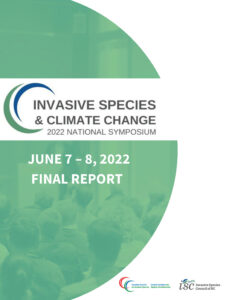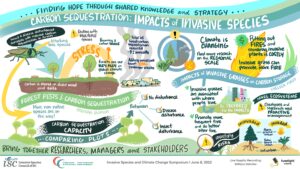CCIS is working with partners across Canada to develop a National Invasive Species and Climate Change (NISCC) Network, which leverages the approach of the successful Regional Invasive Species and Climate Change (RISCC) Network in the USA. Like the RISCC management network, NISCC will work to reduce the joint effects of climate change and invasive species by synthesizing relevant science, sharing the needs and knowledge of managers, building stronger scientist-manager communities. In collaboration with the RISCC Network, invasive species councils, and government partners, CCIS is taking first steps to create this network and supportive research for invasive species managers in Canada.
We are seeking Canadian-based research papers that have linkages between invasive species and climate change. With approval from the authors, submitted research will be summarized into one page, highlighting key findings, and shared online to support invasive species management in Canada. Submit research papers to “programs@canadainvasives.ca”. Please include “NISCC Research Submission” in the subject line.
Regional Invasive Species and Climate Change (RISCC) Networks
The RISCC management networks reduce the joint effects of climate change and invasive species by synthesizing relevant science, sharing the needs and knowledge of managers, building stronger scientist-manager communities, and conducting priority research.
Back to topSymposium Report and Summary
To improve collaboration efforts, the Canadian Council on Invasive Species (CCIS) and the Invasive Species Council of BC (ISCBC) hosted the first National Invasive Species and Climate Change (NISCC) symposium from June 7 to 8, 2022. The virtual symposium gathered policymakers, researchers, and practitioners to examine risks magnified by the interaction of climate change and invasive species. CCIS has compiled the findings from this event into a report linked below. Additionally, a graphic summary of the event topics and presentations is linked below.
Back to topClimate Change and Invasive Species
On its own, a bicycle can’t move at all.
Humans are pretty good at moving, with an average jogging speed of 10-12 kilometres per hour.
But when a human gets on a bicycle, they can move across long distances even more quickly and efficiently.
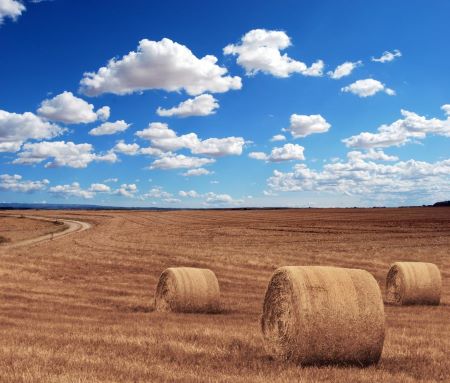
Each year, a quarter of the United State’s gross agricultural product is lost to invasive species.5 Climate change directly impacts agriculture by changing temperature and precipitation patterns, and increasing the number of extreme weather events. Climate change also indirectly impacts agriculture, in part by exacerbating invasive pests and diseases. In these ways, the combined effects of climate change and invasive species are a major threat to food security and livelihoods. This issue is of particular concern in countries where many people rely on subsistence and small-scale farming, but who do not have the means to prevent or manage invasive species.4
This is an example of synergy. In other words, there is a relationship between a human and a bicycle that allows their combined output to be more than the sum of their individual parts.
Unfortunately, synergy is not always a good thing. Climate change and invasive species are problematic issues on their own, and they also interact to produce synergistic effects that are worse than their independent impacts. Climate change can make ecosystems more vulnerable to invasive species, and invasive species can worsen the impacts of climate change.1,2,3 Together, these two stressors can have diverse social, economic, and environmental impacts.4
Back to top
Invasive species exacerbating climate change impacts
Invasive species can affect the rate and overall impacts of climate change in various ways. Click on each of the bullets below to learn more.
Ecosystem resilience
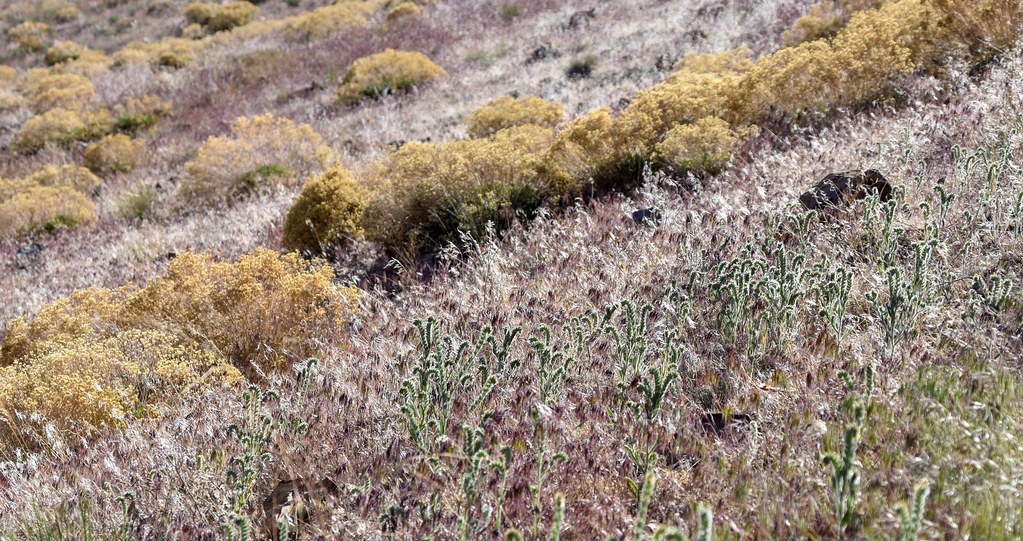
Ecosystems affected by invasive species are more vulnerable to the impacts of climate change. In habitats that are becoming warmer and drier due to climate change, invasive plants can serve as additional fuel for wildfires, resulting in more frequent and severe fire events.4 For example, a 2013 study in the United States showed that invasive cheatgrass alters regional fire regimes, leading to more frequent and more extensive fires.6 If future climate conditions involve both warmer temperatures and higher water availability, a novel cycle of grass fires could lead to the loss of woody shrubland species.
Carbon sequestration
Crested wheatgrass was introduced to North America in the mid 20th century and it is now widely distributed across the prairies in the United States and Canada. Soil under invasive crested wheatgrass has 25% less carbon than soil under native prairie plants, meaning the introduction of this species resulted in substantial losses of soil organic carbon.4
Plants remove carbon dioxide from the atmosphere, allowing it to be stored in soil. This is known as soil carbon sequestration, and it is an important process for mitigating climate change. Various studies have shown that more carbon is stored in areas with high plant biodiversity, as compared to areas with fewer species.7,8,9 Unfortunately, invasive species are one of the top five drivers of biodiversity loss,10 suggesting that invasive species can reduce carbon sequestration through their impacts on biodiversity. In addition, invasive plants species can alter nutrient availability and have different rates of primary productivity, both of which impact carbon sequestration.11,12 To make matters worse, some evidence suggests that invasive species benefit more than native species from increasing carbon dioxide,13 meaning that carbon release is a vicious cycle favoring invasive species. While this all sounds like bad news, it’s important to remember that every invasive species is different and not all will negatively impact carbon storage, so management should be context specific.11
Climate change exacerbating invasive species impacts
Climate change can intensify each step of the invasion process, while also hindering management options. Click on each of the bullets below to learn more.
Invasion pathways and vectors
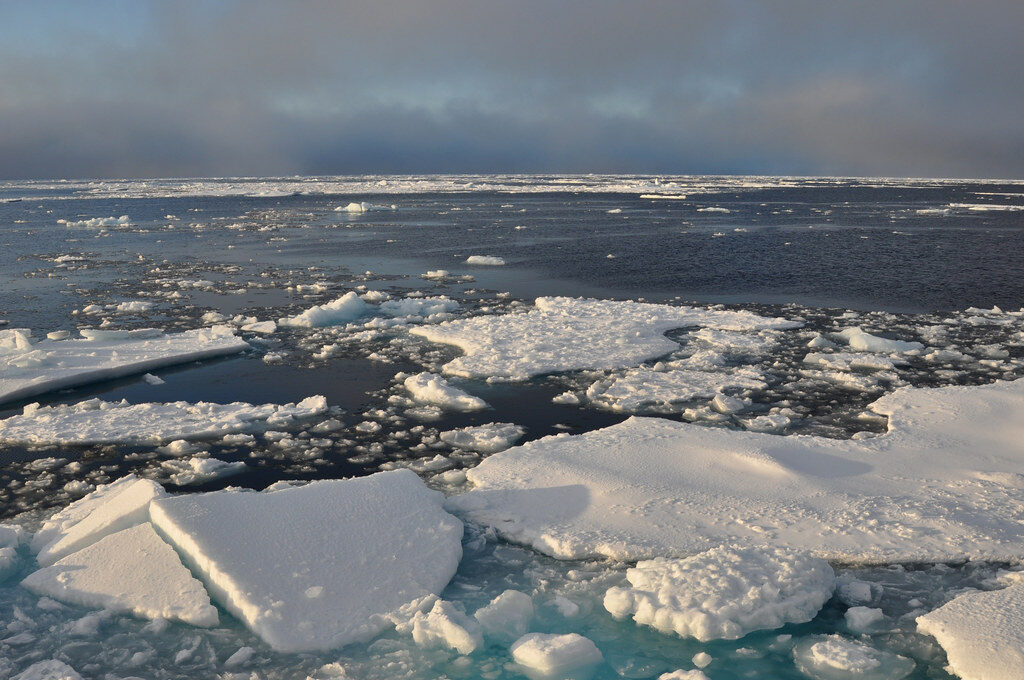
Climate change creates new and enhanced pathways for invasion. These pathways do not impact all areas of the world equally. A 2013 study identified future hotspots for invasion based on climatic changes and international trade routes.15 Northwestern North America was one of these hotspots.
Human trade
As climate change warms the Arctic, new and quicker shipping routes are emerging. These new routes provide two opportunities for invasive species that hitchhike on hulls and in ballast tanks: 1) they can travel to entirely new areas, and 2) their survival rates are improved due to the reduced travel time.3,4,17
Climate change is also altering use of existing shipping routes. For example, climate change is expected to extend the shipping season of the St. Lawrence Seaway, which will allow exotic species to enter the Great Lakes in seasons when they would not previously have had access.3 Warmer temperatures will also increase rates of biofouling (i.e., the accumulation of organisms on ship hulls) and the likelihood of organisms surviving trips in ballast water.
The northwest passage
For hundreds of years, explorers searched for a northern trade route past the Americas to Asia. These explorers were hindered by the thick ice that covered the Arctic Ocean for most of the year. Roald Amundsen was able to make the first complete trip through the northwest passage in the early 1900s. Since 2009, the Northwest Passage has allowed for regular marine shipping due to declines in Arctic sea ice as a result of climate change. Reduced sea ice also allows species to move through the northwest passage, both on their own and in assisted movements on ship hulls and in ballast water.
Extreme weather events
Soybean rust, an invasive agricultural disease, likely traveled with Hurricane Ivan from South America to the southern United States in 2004. Future storms could further spread soybean rust across the United States.5
Extreme weather events like hurricanes and floods are increasingly frequent due to climate change. During these events, birds, fish, and insects can be moved long distances and across physical barriers like dams.16,17 Not all species will survive these tumultuous journeys, however invasive species may fare better than native ones during and after these extreme weather events. This is because invasive species often have traits that make them highly adaptable, including tolerance of a wide range of environmental conditions and an ability to thrive in disturbed environments.16
Establishment and spread
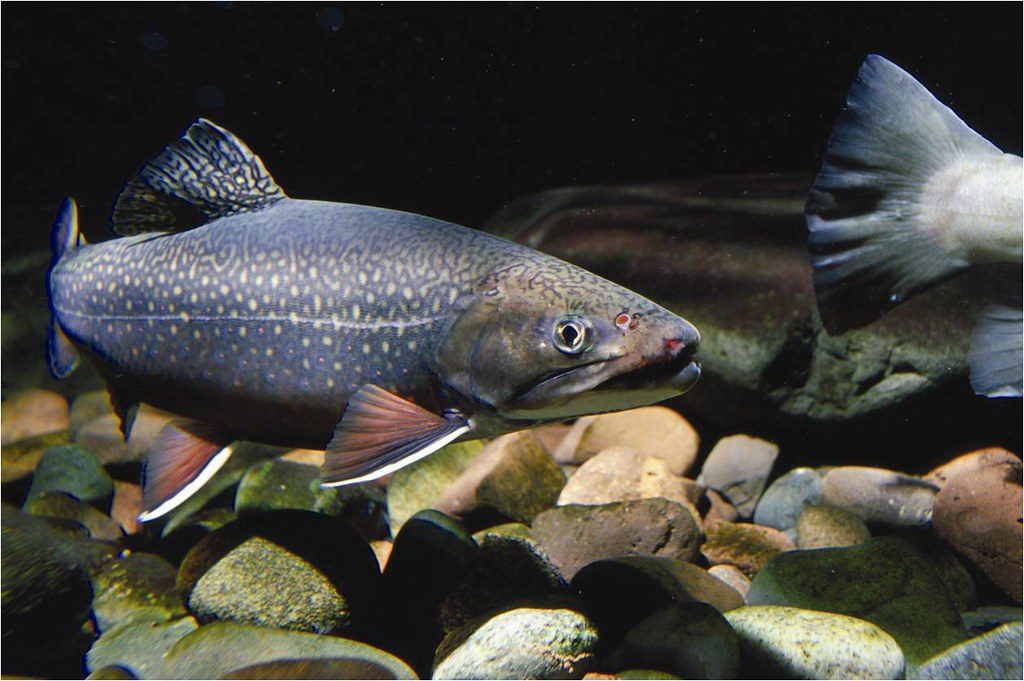
Many invasive species in temperate regions like Canada originate from tropical regions of the world. Although they have successfully established in their new temperate habitats, their survival and growth has been limited by factors like ice cover or cold temperatures.4,17 As temperatures increase due to climate change, the new habitats of these invasive species begin to feel more like the conditions that they originally evolved in, increasing their chances of survival and growth.17,18,19 At the same time, native species are being shifted out of conditions that they evolved in, weakening their resistance to invaders.
In addition, some of the traits that make exotic species successful invaders also help them deal with climate change.4,20,21 For example, invasive species tend to tolerate a wide range of environmental conditions and they can usually disperse easily, meaning they can easily spread to new areas if conditions in one place become intolerable.
Trout tussles
In the Rocky Mountains, native bull trout have a competitive advantage over invasive brook trout in colder streams, but brook trout are superior competitors in warmer temperatures.22 As streams warm, brook trout are expected to out-compete native bull trout. Migration barriers may be needed to prevent non-native trout from expanding their range into higher elevations.
Awakening of sleeper species
Some existing exotic species are currently limited by sub-optimal climate conditions (i.e., they are poorly adapted to the current climate, lacking suitable habitat), but are likely to expand rapidly and become invasive if the climate changes in their favour.17 These species are known as sleeper species. Identifying and controlling sleeper species before they “awaken” is the most cost-effective approach to reducing their impacts under climate change.
Management
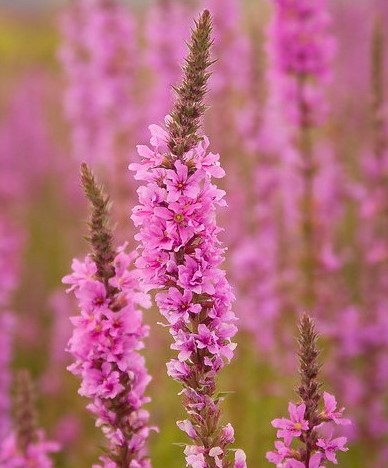
In temperate regions like Canada, some invasive species are suppressed by annual dieback due to cold winter temperatures and ice. Under a changing climate, natural controls may need to be replaced with more active management.17 Unfortunately, some forms of active management may be less effective due to climate change. Some invasive species may have an increased tolerance to herbicides as carbon dioxide concentrations increase.17,19 Effectiveness of biocontrol agents (e.g., insects that eat invasive species) may also be altered if the shifting ranges of the biocontrol agent and the target invasive species no longer align, or if climate change affects the amount that a biocontrol agent eats.25 As a result, invasive species that are currently controlled by a predator or herbivore may become problem species once again.17 However, new management options may also emerge as a result of climate change. For example, coastal areas may be able to take advantage of sea level rise to restore tidal flows in coastal wetlands. This type of restoration will help manage species like phragmites and purple loosestrife.17
Climate change impacts on native species
There’s an elephant in the room when it comes to invasive species and climate change: Climate change will cause native species to shift their ranges too.
Range shifting is a necessary response to climate change, but it can still cause negative impacts for recipient communities. As temperatures increase, white-tailed deer have been expanding their range northward and interacting with moose at the southern edge of their range. White-tailed deer bring new parasites with them, which are transferred to moose and as a result, significant moose population declines are projected. For their part, moose are also expanding their northern range in response to climate change, where they are replacing vulnerable caribou populations.27
In the context of climate change, our current ideas about invasive species will be challenged; species that are currently invasive will have a reduced impact, exotic species that are currently harmless will become invasive, and native species will be moving to new areas in search of suitable conditions for their survival.17,26 Native species that adjust their distribution in response to the changing climate are not the same as invasive species. Unlike invasive species, they will be traveling to adjacent areas and will already share some evolutionary history with the species that live there, so they are less likely to cause extensive damage. Native species are also on the move for different reasons: they cannot survive in their native ranges, so shifting ranges is a form of ecological resilience that needs to be facilitated so that these species do not go extinct.
 At the southern end of their range, moose are being impacted by range-shifting white-tailed deer. Meanwhile, moose are disrupting caribou as they expand their range northward.
At the southern end of their range, moose are being impacted by range-shifting white-tailed deer. Meanwhile, moose are disrupting caribou as they expand their range northward.
What needs to be done?
As the climate and biodiversity crises heighten, the linkages between invasive species and climate change must be considered in research, policy development, and management.
Three key principles should be followed:
1. Ensure that climate change mitigation does not exacerbate the threat from invasive species.
2. Incorporate climate change projections into management of invasive species.
3. Design climate change adaptations that also contribute to invasive species management.16
This work will require coordination and collaboration by researchers, managers, and practitioners in the fields of climate change and invasive species. To improve collaboration efforts, the Canadian Council on Invasive Species (CCIS) and the Invasive Species Council of BC (ISCBC) hosted the first National Invasive Species and Climate Change (NISCC) symposium from June 7 to 8, 2022. The virtual symposium gathered policymakers, researchers, and practitioners to examine risks magnified by the interaction of climate change and invasive species. CCIS has compiled the findings from this event into a national climate change and invasive species report.
Back to topReferences
1. Kernan, M. (2015). Climate change and the impact of invasive species on aquatic ecosystems. Aquatic Ecosystem Health & Management, 18(3): 321-333. https://doi.org/10.1080/14634988.2015.1027636
2. Mainka, S. A., & Howard, G. W. (2010). Climate change and invasive species: double jeopardy. Integrative Zoology, 5(2), 102–111. https://doi.org/10.1111/j.1749-4877.2010.00193.x
3. Pyke, C. R., Thomas, R., Porter, R. D., Hellmann, J. J., Dukes, J. S., Lodge, D. M., & Chavarria, G. (2008). Current Practices and Future Opportunities for Policy on Climate Change and Invasive Species. Conservation Biology, 22(3), 585–592. https://doi.org/10.1111/j.1523-1739.2008.00956.x
4. IUCN (International Union for Conservation of Nature). (2021). Invasive species and climate change. IUCN issue brief: www.iucn.org/issues-briefs
5. Ziska, L. H., Blumenthal, D. M., Runion, G. B., Hunt, E. R., & Diaz-Soltero, H. (2010). Invasive species and climate change: an agronomic perspective. Climatic Change, 105(1-2), 13–42. https://doi.org/10.1007/s10584-010-9879-5
6. Balch, J. K., Bradley, B. A., D’Antonio, C. M., & Gómez-Dans, J. (2012). Introduced annual grass increases regional fire activity across the arid western USA (1980-2009). Global Change Biology, 19(1), 173–183. https://doi.org/10.1111/gcb.12046
7. Chen, S., Wang, W., Xu, W., & Bai, Y. (2018). Plant diversity enhances productivity and soil carbon storage. PNAS 115(16): 4027-4032. https://doi.org/10.1073/pnas.1700298114
8. Fornara, D. A., & Tilman, D. (2008). Plant functional composition influences rates of soil carbon and nitrogen accumulation. Journal of Ecology, 96(2), 314–322. https://doi.org/10.1111/j.1365-2745.2007.01345.x
9. Lange, M., Eisenhauer, N., Sierra, C. A., Bessler, H., Engels, C., Griffiths, R. I., Mellado-Vázquez, P. G., Malik, A. A., Roy, J., Scheu, S., Steinbeiss, S., Thomson, B. C., Trumbore, S. E., & Gleixner, G. (2015). Plant diversity increases soil microbial activity and soil carbon storage. Nature Communications, 6(1). https://doi.org/10.1038/ncomms7707
10. IPBES. (2019). Global assessment report on biodiversity and ecosystem services of the Intergovernmental Science-Policy Platform on Biodiversity and Ecosystem Services. E. S. Brondizio, J. Settele, S. Díaz, and H. T. Ngo (editors). IPBES secretariat, Bonn, Germany. 1148 pages. https://doi.org/10.5281/zenodo.3831673
11. Peltzer, D.A., Allen, R.B., Lovett, G.M., Whitehead, D., & Wardle, D.A. (2010). Effects of biological invasions on forest carbon sequestration. Global Change Biology 16(2); 732-746. https://doi.org/10.1111/j.1365-2486.2009.02038.x
12. Miniat, C. F., Fraterrigo, J. M., Brantley, S. T., Callaham, M. A., Cordell, S., Dukes, J. S., Giardina, C. P., Jose, S., & Lovett, G. (2021). Impacts of Invasive Species on Forest and Grassland Ecosystem Processes in the United States. Invasive Species in Forests and Rangelands of the United States, 41–55. https://doi.org/10.1007/978-3-030-45367-1_3
13. Smith, S. D., Huxman, T. E., Zitzer, S. F., Charlet, T. N., Housman, D. C., Coleman, J. S., Fenstermaker, L. K., Seemann, J. R., & Nowak, R. S. (2000). Elevated CO2 increases productivity and invasive species success in an arid ecosystem. Nature, 408(6808), 79–82. https://doi.org/10.1038/35040544
14. Chapin III, F. S., Zavaleta, E. S., Eviner, V. T., Naylor, R. L., Vitousek, P. M., Reynolds, H. L., Hooper, D. U., Lavorel, S., Sala, O. E., Hobbie, S. E., Mack, M. C., & Díaz, S. (2000). Consequences of changing biodiversity. Nature, 405(6783), 234–242. https://doi.org/10.1038/35012241
15. Bellard, C., Thuiller, W., Leroy, B., Genovesi, P., Bakkenes, M., & Courchamp, F. (2013). Will climate change promote future invasions? Global Change Biology, 19(12), 3740–3748. https://doi.org/10.1111/gcb.12344
16. Diez, J. M., D’Antonio, C. M., Dukes, J. S., Grosholz, E. D., Olden, J. D., Sorte, C. J., Blumenthal, D. M., Bradley, B. A., Early, R., Ibáñez, I., Jones, S. J., Lawler, J. J., & Miller, L. P. (2012). Will extreme climatic events facilitate biological invasions? Frontiers in Ecology and the Environment, 10(5), 249–257. https://doi.org/10.1890/110137
17. Hellmann, J. J., Byers, J. E., Bierwagen, B. G., & Dukes, J. S. (2008). Five Potential Consequences of Climate Change for Invasive Species. Conservation Biology, 22(3), 534–543. https://doi.org/10.1111/j.1523-1739.2008.00951.x
18. Gallardo, B., Aldridge, D. C., González-Moreno, P., Pergl, J., Pizarro, M., Pyšek, P., Thuiller, W., Yesson, C., & Vilà, M. (2017). Protected areas offer refuge from invasive species spreading under climate change. Global Change Biology, 23(12), 5331–5343. https://doi.org/10.1111/gcb.13798
19. Hulme, P. E. (2016). Climate change and biological invasions: evidence, expectations, and response options. Biological Reviews, 92(3), 1297–1313. https://doi.org/10.1111/brv.12282
20. Chai, S.-L., Zhang, J., Nixon, A., & Nielsen, S. (2016). Using risk assessment and habitat suitability models to prioritise invasive species for management in a changing climate. PLOS ONE, e0165292. https://doi.org/10.1371/journal.pone.0165292
21. Havel, J. E., Kovalenko, K. E., Thomaz, S. M., Amalfitano, S., & Kats, L. B. (2015). Aquatic invasive species: challenges for the future. Hydrobiologia, 750(1), 147–170. https://doi.org/10.1007/s10750-014-2166-0
22. Rahel, F. J., & Olden, J. D. (2008). Assessing the Effects of Climate Change on Aquatic Invasive Species. Conservation Biology, 22(3), 521–533. https://doi.org/10.1111/j.1523-1739.2008.00950.x
23. Bennett, S., Santana‐Garcon, J., Marbà, N., Jorda, G., Anton, A., Apostolaki, E. T., Cebrian, J., Geraldi, N. R., Krause‐Jensen, D., Lovelock, C. E., Martinetto, P., Pandolfi, J. M., & Duarte, C. M. (2021). Climate‐driven impacts of exotic species on marine ecosystems. Global Ecology and Biogeography, 30(5), 1043–1055. https://doi.org/10.1111/geb.13283
24. Cunningham, D.C., Barry, S.C., Woldendorp, G., & Burgess, M.B. (2004). A framework for prioritizing sleeper weeds for eradication. Weed technology, 18: 1189-1193. http://www.jstor.org/stable/3989616
25. Runyon, J. B., Butler, J. L., Friggens, M. M., Meyer, S. E., & Sing, S. E. (2012). Invasive species and climate change (Chapter 7). In: Finch, Deborah M., Ed. Climate Change in Grasslands, Shrublands, and Deserts of the Interior American West: A Review and Needs Assessment. Gen. Tech. Rep. RMRS-GTR-285. Fort Collins, CO: U.S. Department of Agriculture, Forest Service, Rocky Mountain Research Station. P. 97-115., 285, 97–115. https://www.fs.usda.gov/treesearch/pubs/41191
26. Urban, M. C. (2020). Climate-tracking species are not invasive. Nature Climate Change, 10(5), 382–384. https://doi.org/10.1038/s41558-020-0770-8
27. Wallingford, P. D., Morelli, T. L., Allen, J. M., Beaury, E. M., Blumenthal, D. M., Bradley, B. A., Dukes, J. S., Early, R., Fusco, E. J., Goldberg, D. E., Ibáñez, I., Laginhas, B. B., Vilà, M., & Sorte, C. J. B. (2020). Adjusting the lens of invasion biology to focus on the impacts of climate-driven range shifts. Nature Climate Change, 10(5), 398–405. https://doi.org/10.1038/s41558-020-0768-2

